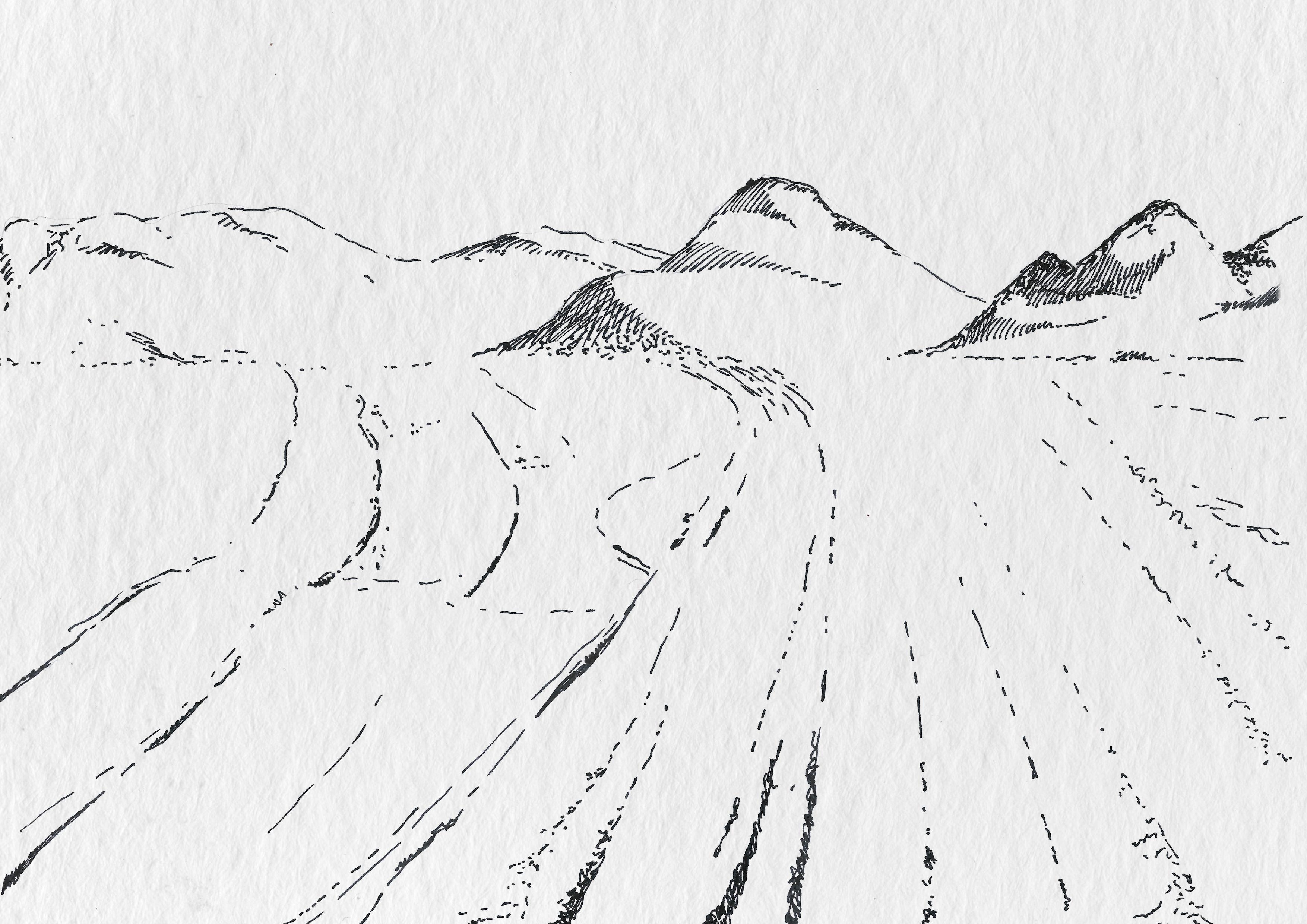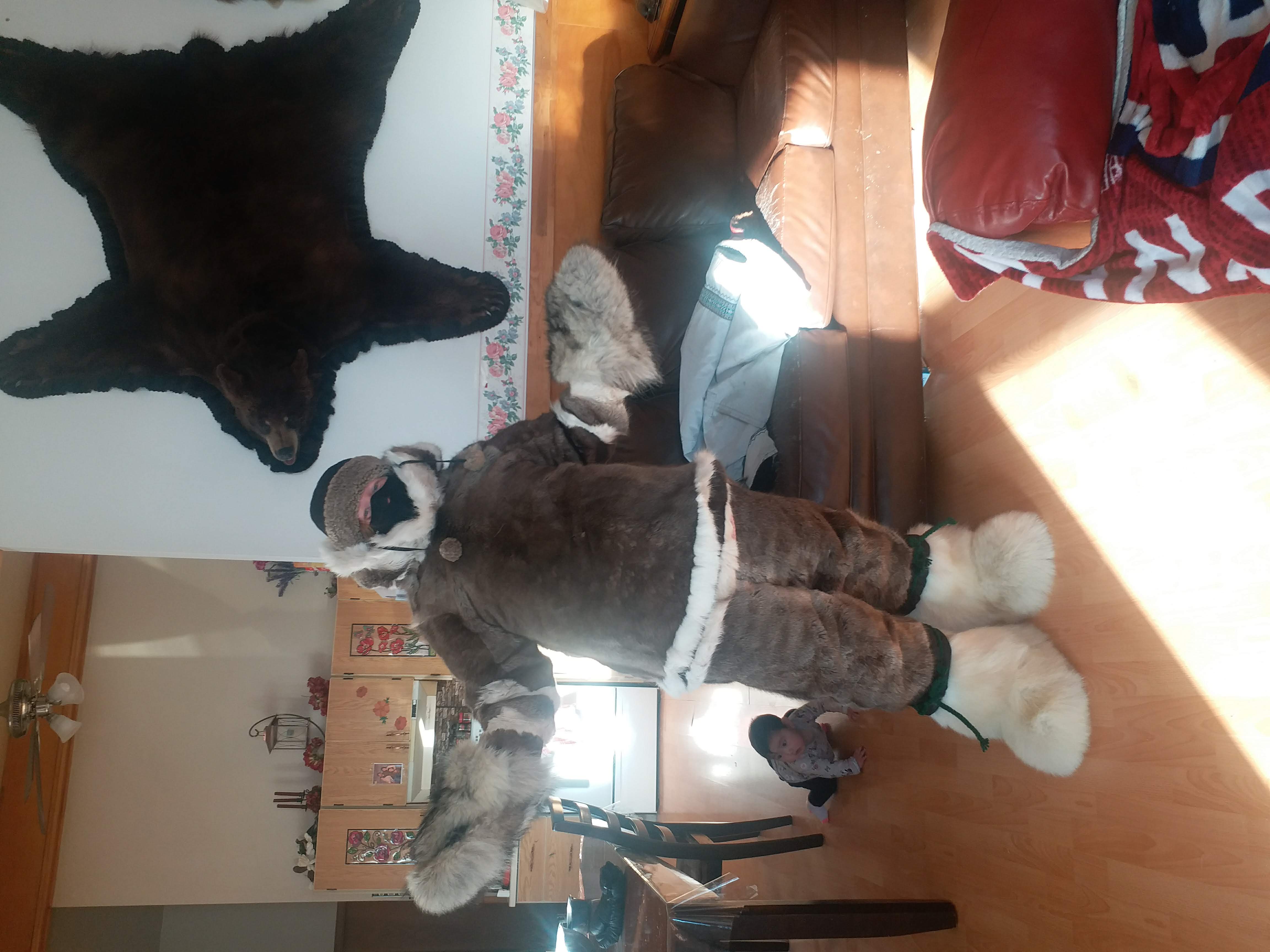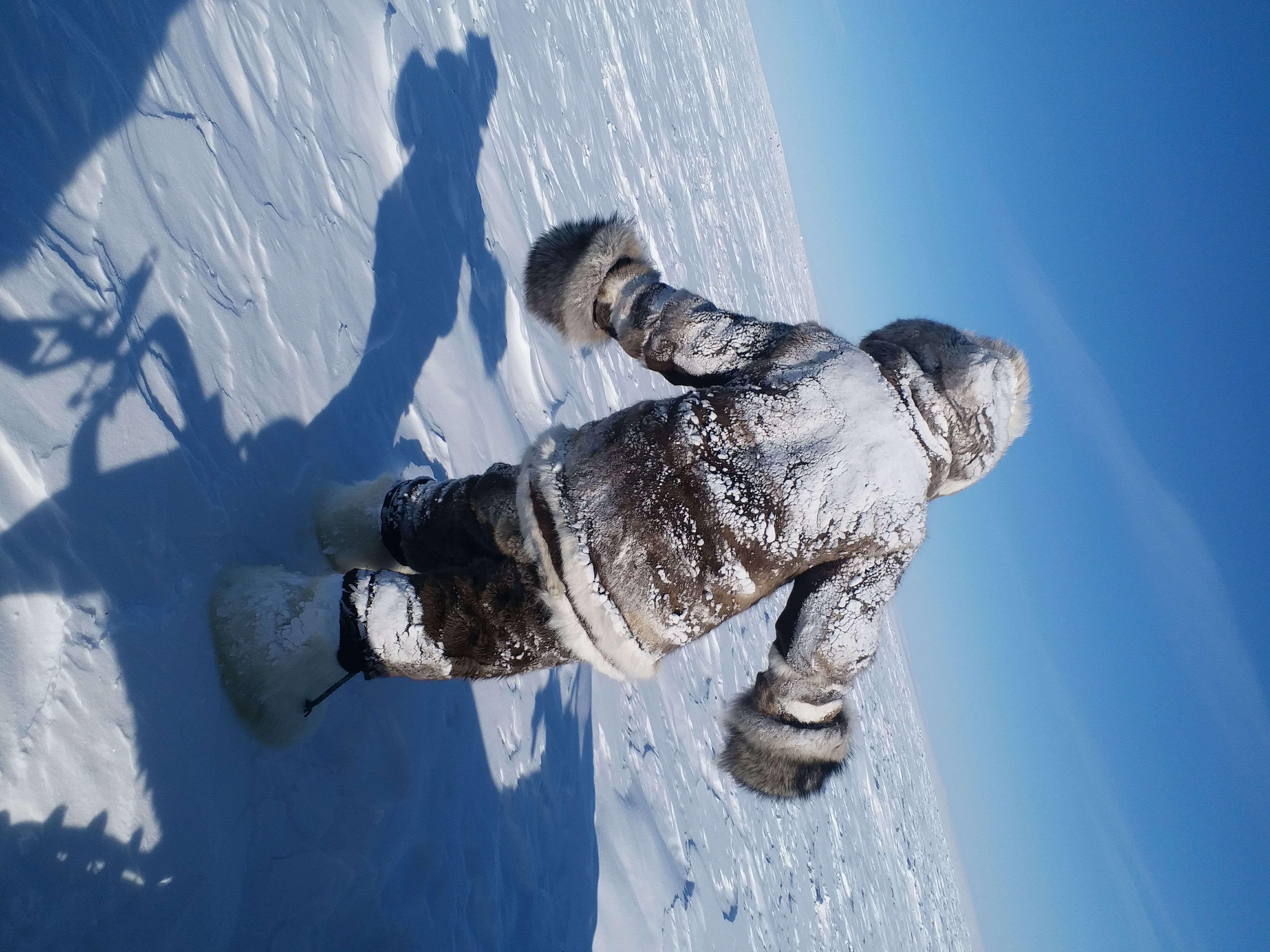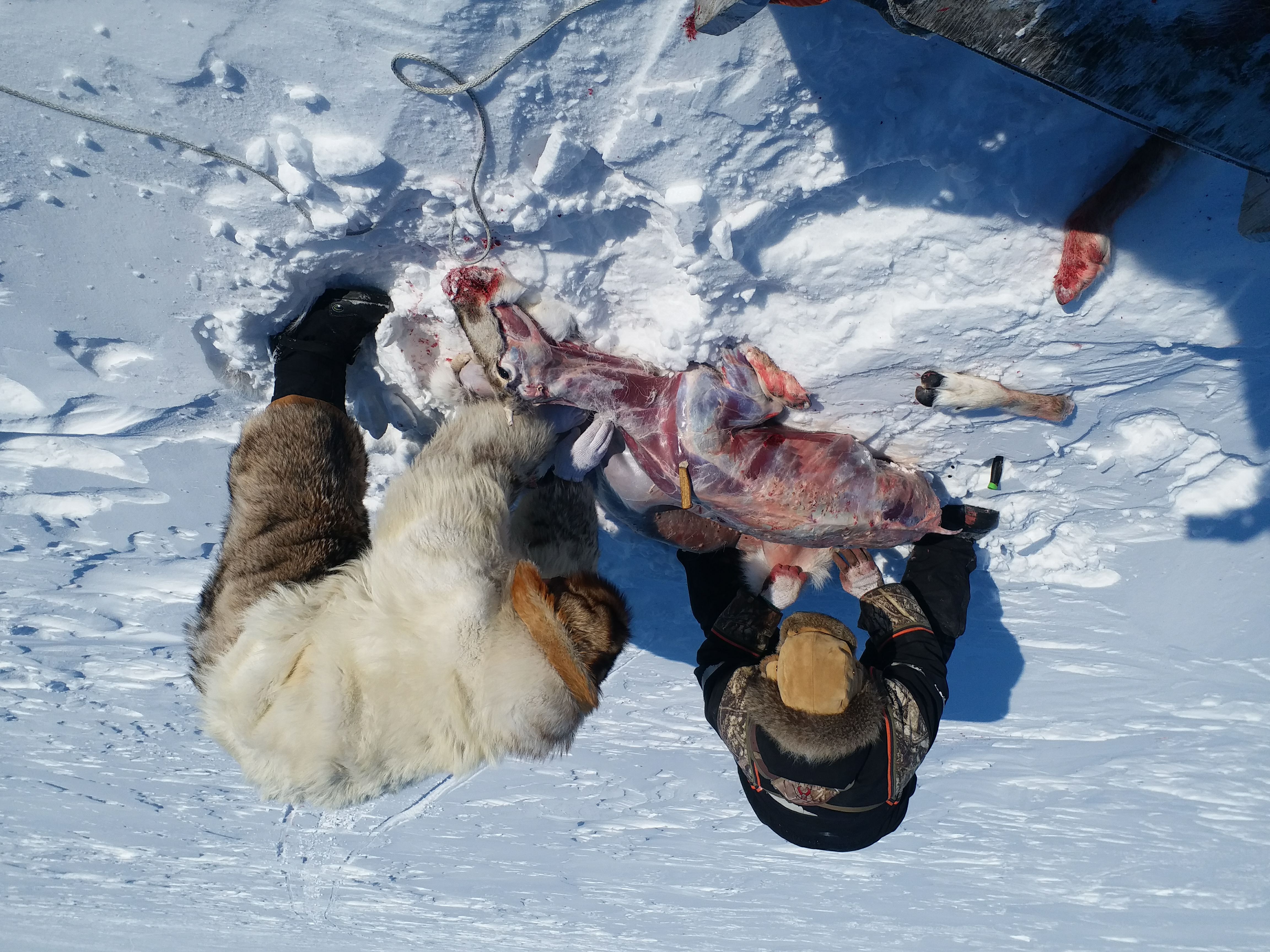Caribou hunt

Having never travelled to the North, and without the other research team members present due to to Covid-19 travel restrictions, I was welcomed, kept company, and supported by Coral Harbour-based PI Leonard Netser and his family.
On March 23rd, 2020, Leonard invited me along on a Caribou hunting trip with his son. I was borrowed a Caribou skin parka and pants, wolf-fur mitts, and polar bear fur Mukluks (boots) to remain comfortable during the 6 hour, -58 windchill hunting trip.
This hunting trip significantly influenced how the rest of my PhD-research developed. It was my first on-the-land experience in Inuit Nunangat, and my first exposure to hunting. As a visiting guest, and newly exposed to these circumstances, I was struck by the process of decision-making at multiple moments during the hunt. The choices made in terms of passing by multiple herds to reach seemingly more suitable areas for hunting Caribou, the procedures of tracking footprints, choosing which Caribou to shoot, and the obvious skills in terms of skinning and stripping the Caribou, once shot, all spoke to an experiential dimensional of IQ that seemed to be missing from the TEK workshops conducted in Gjoa Haven in 2019.
-
Dressed in Caribou furs
-
After hours on the back of a skidoo
-
Leonard and Troy skinning and stripping a Caribou
Painting Cabin
As the week progressed, and I was still waiting for the weather to turn so that I could fly back home, Leonard and his family made sure I was comfortable and had company. As I tried to make myself useful in a way that aligned more with my own skills, I helped Leonard and his grandson paint the inside of a cabin that was in the preparatory stages of being pulled out on the land later that season. I also was invited by the family to help prepare one of the Caribou from the hunt before. As I received guidance on how to cut a rib with an Ulu (traditional Inuit knife) from Leonard’s wife, I was present for the- what I have learnt later to be a very common- scene of preparing meat on a cardboard sheet on the floor, while family members and other community members would come in for a chat and to collect a cut.
In total I would only spend 5 days in Coral Harbour that first trip. Much of that time was spent drinking tea with Leonard while we watched the world respond to the Covid-19 pandemic on our phones. Apart from a lack of toilet paper and hand-sanitizer, Coral Harbour seemed shielded from the rest of the world during those days. This of course was not the case - the North is highly connected and its residents are reliant on frequent travel. Nevertheless, this visit to Coral Harbour- although cut short- allowed for an experience that would thoroughly impact my approach to becoming knowledgeable about Inuit Qaujimajatuqangit and its relations to the land.



